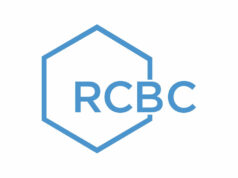BoJ’s silence on side effects of easing adds risk
THE Bank of Japan (BoJ) is adding to the risks of its aggressive monetary easing policies by discussing only their potential upside, according to recently departed board member Takahide Kiuchi.
“Communicating only bullish confidence about the positives is a big problem,” Kiuchi said in an interview with Bloomberg on Friday.
Kiuchi, whose five-year term ended in July, voted against most of Governor Haruhiko Kuroda’s unprecedented easing measures. He argued that the benefits weren’t worth the risks, which he said included possible market disruptions and potential losses on the BoJ’s balance sheet.
“A policy that takes into account side effects will boost credibility and enhance its impact,” said Kiuchi, who is now executive economist at Nomura Research Institute.
After more than four years of extraordinary asset purchases, the BoJ’s balance sheet has ballooned to nearly the same size as Japan’s 537-trillion yen economy. Yet 2% inflation is nowhere in sight, and economists and lawmakers are increasingly expressing concern about the sustainability of the BoJ’s stimulus program.
Kuroda has generally declined to discuss the risks associated with his stimulus policies, while pledging to carefully monitor them. He chose from the outset of his tenure to differentiate himself from his predecessor, Masaaki Shirakawa, who was criticized by analysts and lawmakers for emphasizing the side effects of stimulus soon after it was introduced.
Kuroda’s term ends in April next year. That will offer a chance for a change in both policy and communication style at the central bank — even if Kuroda is appointed to a second term, said Kiuchi. He pointed to last year’s shift to yield curve control, which was intended to enhance sustainability, as a sign that the need for change is understood.
The first thing that has to be done is to change the price target to a more flexible one, he said.
Kiuchi listed a potential disruption of Japan’s government bond market as the biggest risk from BoJ policies.
Because it has already bought so much of the market, the BoJ may run out of Japanese government bonds to purchase in about a year, or even sooner if it needed to buy more bonds under its yield curve control framework, he said.
Kiuchi said the BoJ is nearing the limits of its easing measures and may be forced to normalize policy before reaching its 2% inflation target, which he described as unattainable in the foreseeable future.
“The 2% inflation target rate is not achievable and not appropriate either,” he said.
Policy discussions during his tenure were “stressful,” Kiuchi said, adding that it was regrettable that he couldn’t convince the nine-member board to share his view of the problems associated with the easing program. — Bloomberg



